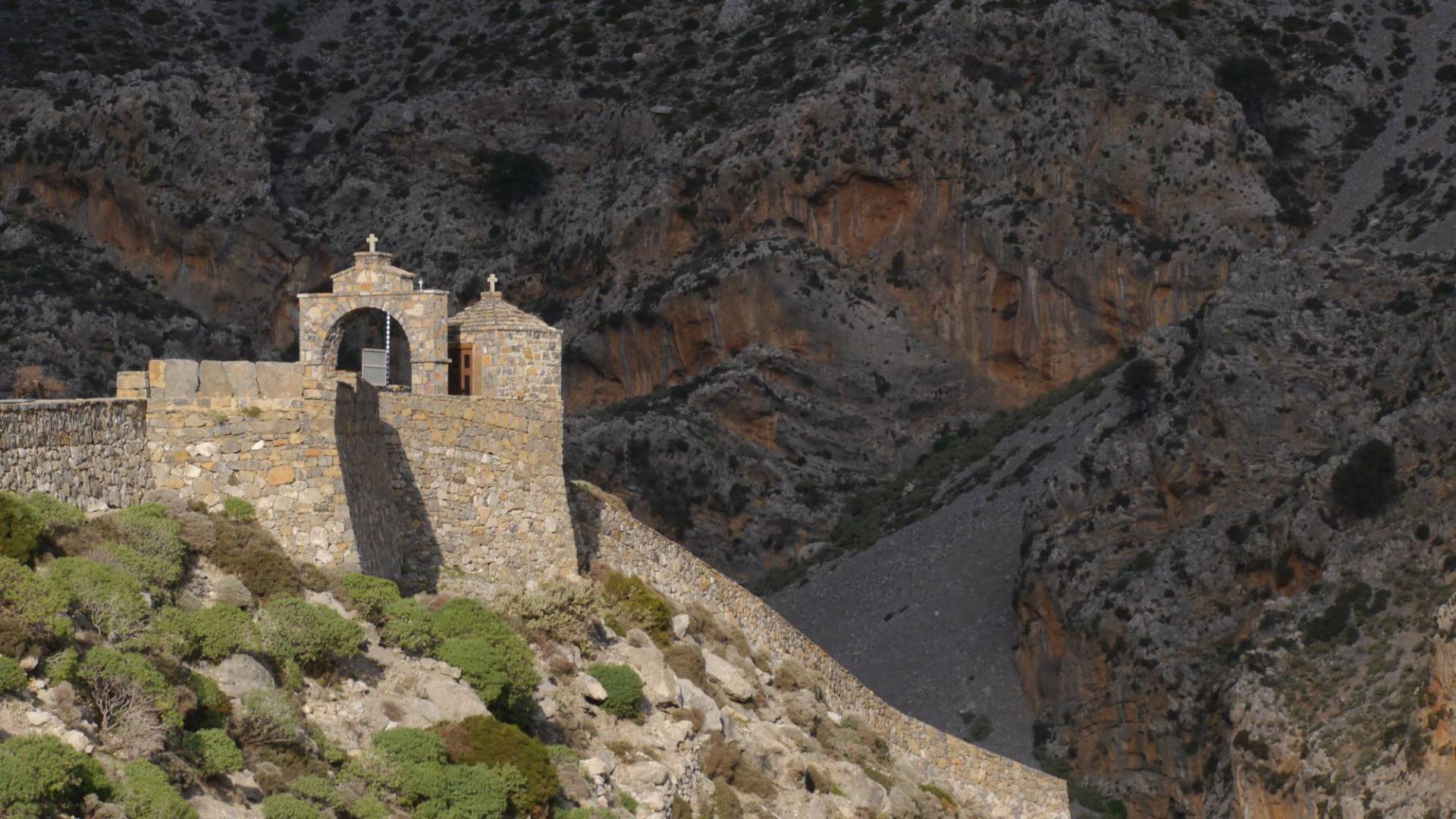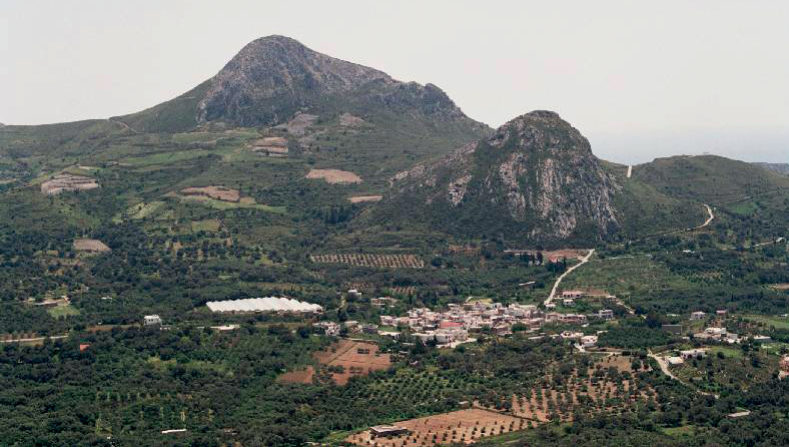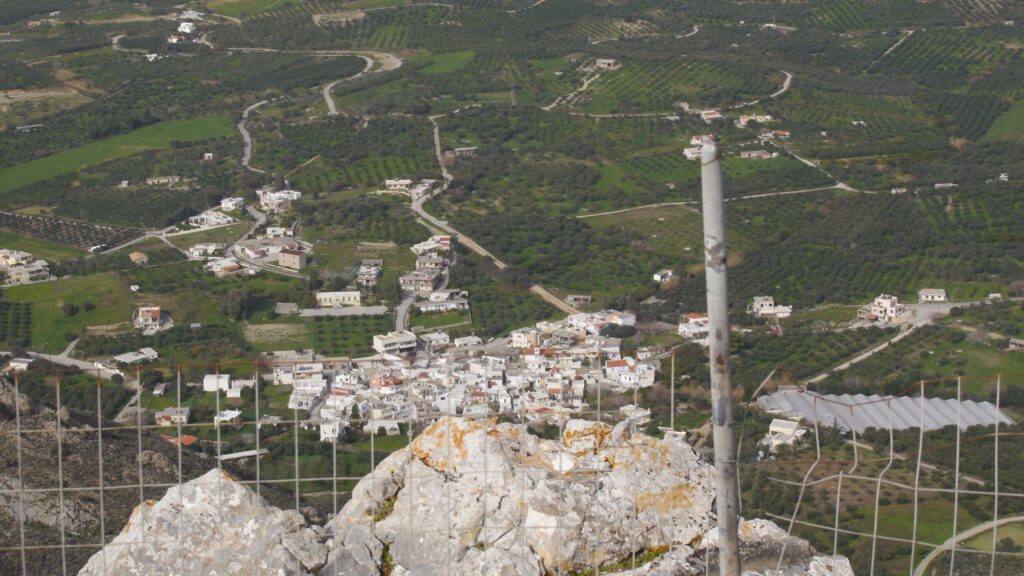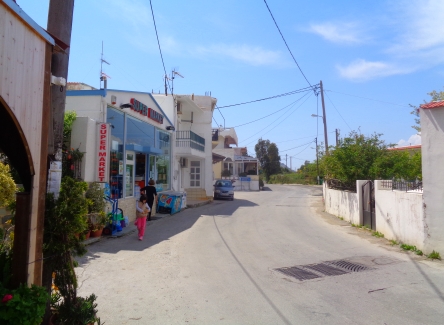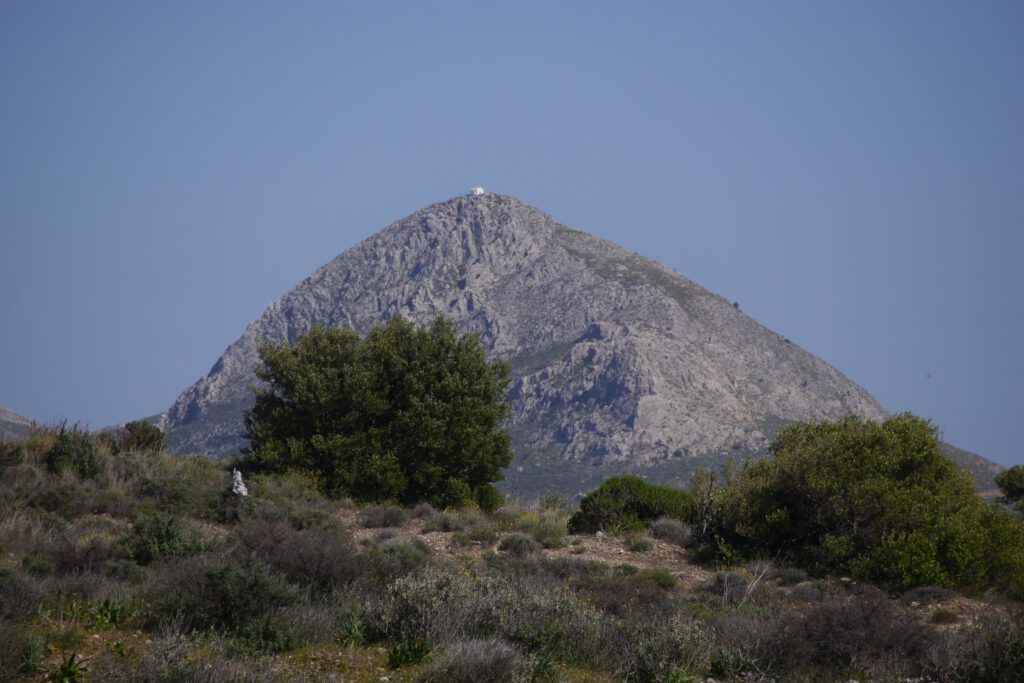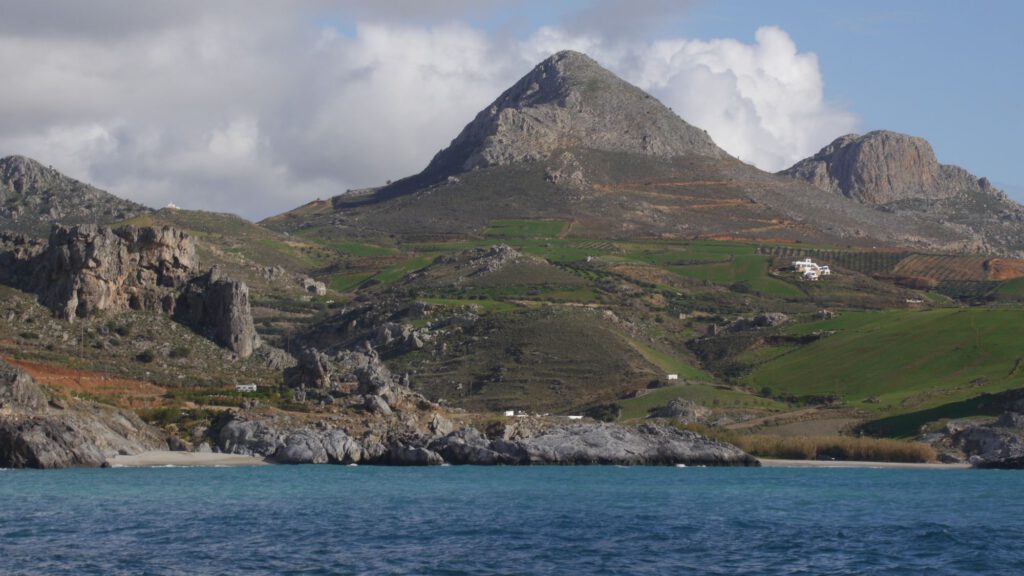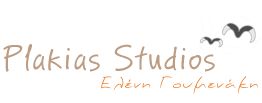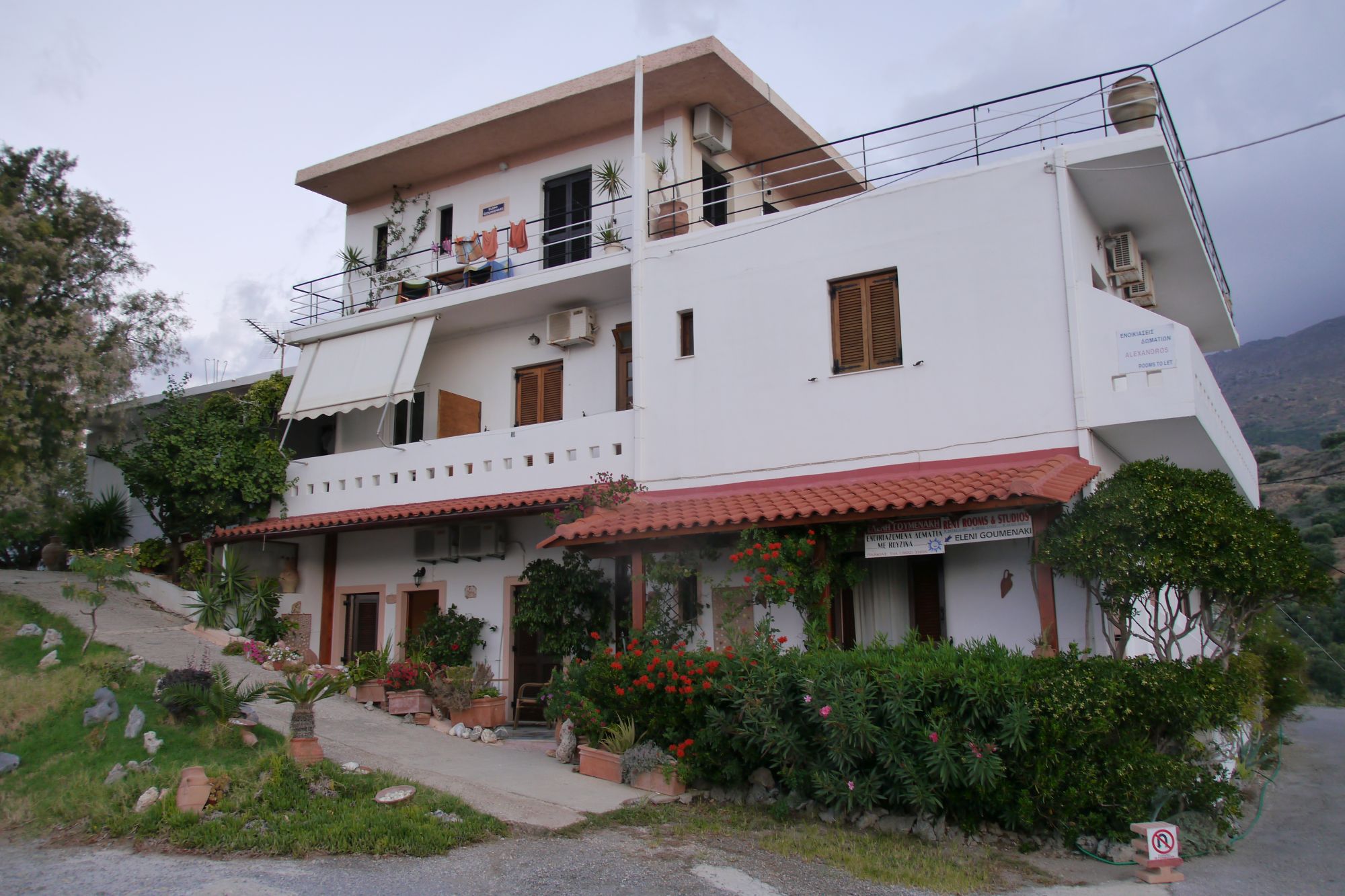is a village situated near the Libyan Sea at an altitude of 90 m, 35 km from Rethimnon and just 3.5 km from the sea. In the southern part there are small mountain peaks: the Modi at the foot of the village, to the left of it the peak of Timeos Stavros and a small hill to the right of the Modi with the church of Agios Konstantinos and Eleni. On the northern side are the foothills of the mountain peak of Kouroupa (with the villages of Asomatos opposite and Mariou to the left).
The local community of Lefkogia includes the settlements: Lefkogia, Ammoudi, Gianniou and Skinária. According to the 2011 census, it has 363 inhabitants (of which 283 are in Lefkogia and 60 in Gianniou).
Origin of the place name
The actual origin of the place name is not jet clear. There are three derivations:
1. from the white earth; “Lefki Ji” (white earth – Λευκή Γή),
2. of the many white flowers that were in the meadow and the field of the school and finally of
“white piece of land” (“Λευκής Γαία”), which was given on the occasion of a marriage.
It is not really known when and by whom the village was actually originally founded. The first written mention of the village dates back to Fr. Barozzi (1577). This suggests that the village must have existed long before that. The “Arsinóe” publications (1) mention that the first inhabitants and founders of the village were four families who came from Gavdos to escape the Corsair raids. And according to tradition, they settled there because the village is not visible from the sea (the Timeos Stavros and Modi hills just above Lefkogia obscure the view). In addition, the two streams full of willow braids provide the ideal hiding place in case of raids.
The village was built on a flat spot between two large streams that collected water from the surrounding slopes. They join at the west end of the village and flow down to the sea in the area of Ammoudi. In summer the stagnant water of the creeks filled with myriads of frog eggs. The paths were then full of frogs, so that the neighbouring villages also called Lefkogia frog village. The croaking of the frogs could be heard day and night.
Churches
There are the following churches in the local area:
- Saint George (Agios Georgios – Αγίοs Γεωργίοs)
- Birth of the Virgin Mary (Gennisi tis Panajias – Γέννηση της Παναγίας), built in 1813 and renovated in 1907 and 2007,
- as well as the other buildings of the Church of Saint Constantine (Agios Konstantinos – Άγιος Κωνσταντίνος).
- Saint Antonius (Agios Antonios – Άγιος Αντώνιος)
- Holy Cross (Timeos Stavros – Τίµιος Σταυρός), on the top of the mountain of the same name, built in 1890.
- Churches built after 1960:
- Saint Nektarios (Agios Nektarios – Άγίος Νεκταρίος
- Saint Marina (Agia Marina – Άγια Μαρίνα)
- Saint Fanourios (Agios Fanourios – Άγιος Φανουρίος)
- Saint Dionysios (Agios Dionysios – Άγιος ∆ιονύσιος)
- The latter two churches were built with donations from the inhabitants of the village.
Water supply
The inhabitants of the village drew their drinking water from a spring that rises at the foot of Modi Hill, which was built in 1886, and from a spring at a place called Gaidourospilia.
Today there is a complete water supply network with drinking water obtained from the aforementioned spring and from the springs of the Kourtaliotis gorge.
There is also a complete sewage system.
Plants (oil mills)
Before 1950 there were four oil mills and today only the cooperative mill founded in 1915 remains.
Beaches
About 3.5 km from the village square there is Skinária, a quiet beach that is ideal for diving as it is very deep. Also from Lefkogia you can visit the beaches Ammoudi and Ammoudaki, which welcome countless visitors every year. These three beaches belong to the local area of Lefkogia.
Products
The following products come from the village:
- Olive oil
- Liverstock
- Organic greenhouse products (tomatoes, cucumbers)
- Tourist offers
The cropland and non-cropland of the Lefkogianni are irrigated by open and closed circuits, which come from the springs of the Kourtaliotis gorge.
Footnotes
(1) unfortunately I could not find the “Arsinóe” publications …
Sources
- Description of Lefkogia on the official site of the municipality of Agios Vasilios
- Χώρια της π. Επαρχίας Άγιου Βασιλείου Ρεθύμνου; Τόμος Δ (4) του Έκδοση Διεθνούς επιστημονικού συνεδρίου για την πρώην επαρχεία Άγιου Βασιλείου; Ρέθυμνο 2011, Άννα Μανουσάκη-Καρπέτα – Λευκόγεια – σελ. 395

























